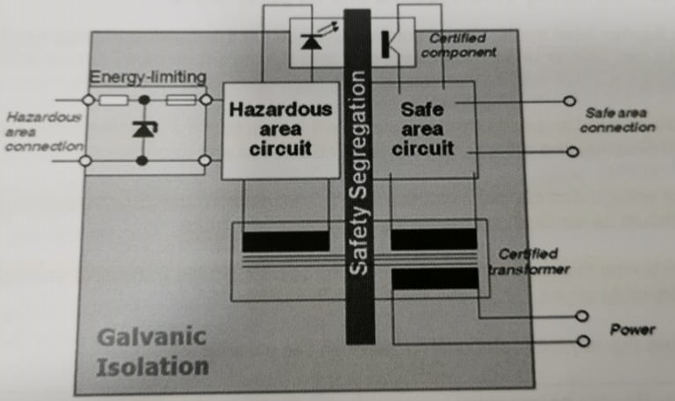Galvanically Isolated Barriers #
Devices which overcome the limitations of zener barrier are called isolation interfaces.
Typically, the isolation required may be achieved by using transformers, opto-couplers and/or relays.
These galvanically isolated barriers are barriers which allow transference of energy from one side to the other, without any direct wired connection between the power source on the one side and the hazardous area terminals on the other.
The galvanic isolator must prevent high voltage break-through into the hazardous area, and limit the voltage and current to the hazardous area.
Examples of Galvanic Isolation #
In this example, isolation between the hazardous and safe areas is achieved by means of a high integrity transformer and relay. The voltage & current limiting circuitry is not shown.

Opto-coupler isolation #
In an opto-isolator, light or infrared emitted from the LED falls onto the phototransistor, transmitting the signal from hazardous to safe area.

Note that the galvanic isolator incorporates a resistor/zener circuit to do the actual energy limiting, in the same way as in a discrete zener barrier.
Many types of galvanic isolator are available to meet specific instrumentation requirements.

Earthing of Galvanic units #
The major advantage of galvanic isolation barrier that an intrinsically safe earth is not required.
They can be used in earth-free instrumentations (where a single earth fault would not cause a hazard) or where the hazardous area measuring device is earthed via the plant.




